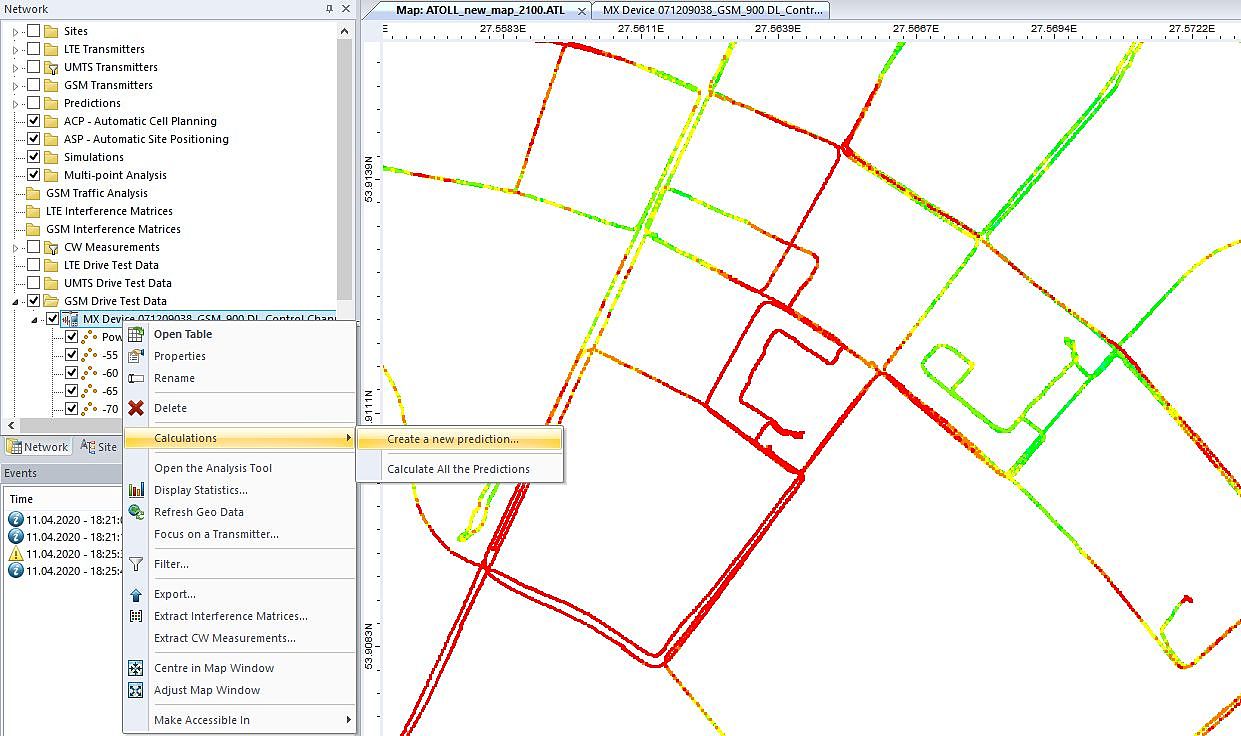-
Senior Member
 Reputation: 740
Reputation: 740
1 out of 1 members found this post helpful.
 Coverage by Signal Level vs Coverage by RSRP Level
Coverage by Signal Level vs Coverage by RSRP Level
Hi
1. Can anybody explain the exact difference between Coverage by RSRP Level vs Coverage by Signal Level predictions in LTE?
2. When comparing LTE Drive Test Data vs Prediction, the only calculation is Coverage by Signal Level. However it appears this Coverage by Signal Level doesnt accurately model the COLLECTED drive test data RSRP? Why is this because Coverage by Signal level doesnt take into effect interference ??
Does anybody have Drivetest data RSRP vs Prediction comparison results in Atoll? Any pointers or tutorials?
-
Post Thanks - 1 Thanks
-
2020-04-10 12:26 PM
# ADS
Circuit advertisement

-
VIP Member
Reputation: 2736
2 out of 2 members found this post helpful.
 Re: Coverage by Signal Level vs Coverage by RSRP Level
Re: Coverage by Signal Level vs Coverage by RSRP Level
RSSI – Received Signal Strength Indicator:The carrier RSSI (Receive Strength Signal Indicator) measures the average total received power observed only in OFDM symbols containing reference symbols for antenna port 0 (i.e., OFDM symbol 0 & 4 in a slot) in the measurement bandwidth over N resource blocks.
The total received power of the carrier RSSI includes the power from co-channel serving & non-serving cells, adjacent channel interference, thermal noise, etc. Total measured over 12-subcarriers including RS from Serving Cell, Traffic in the Serving Cell
RSRP – Reference Signal Received Power: RSRP is a RSSI type of measurement, as follows there are some definition of it and some details as well.
It is the power of the LTE Reference Signals spread over the full bandwidth and narrowband.
In drive tests, the RSRP is usually measured. However, there are scanners that measure 1 RS. In this case the difference may be 20 dB ( depending on the band width)
-
Post Thanks - 4 Thanks
-
Senior Member
 Reputation: 740
Reputation: 740
 Re: Coverage by Signal Level vs Coverage by RSRP Level
Re: Coverage by Signal Level vs Coverage by RSRP Level
Thanks Dmitry. This is clear.
Further to this, looks like Atoll DriveTest comparison only compares Drive Test to Coverage by Serving Signal Cell (which is more like RSSI).
The only way to compare DriveTest RSRP vs Prediction RSRP is to export Coverage by RSRP Prediction into Vertical Mapper GRD file and then use Vertical mapper to extract
predicted values at the LAT/Long of Measured Values.
However, I have problems doing this.
Has anybody done something like this?
eg
DriveTest Mapinfo table has lat/long and Measure values.
I want to extract predicted RSRP from the RSRP prediction GRD at that exact lat/long and put into the mapinfo drivetest table.
Any pointers or examples will be very helpful.
-
Senior Member
 Reputation: 591
Reputation: 591
 Re: Coverage by Signal Level vs Coverage by RSRP Level
Re: Coverage by Signal Level vs Coverage by RSRP Level
RSRP level is based on signal level, but the catch here is that it represents the signal level of camped cell and the neigboring cells. So, it contains interference from other cells. We need another metric to measure the strenght of serving cell vis a vis the neighbors, and that is the RSRQ. So we need two metrics - one to determine the SS and other for the quality. This is across radio systems. Even, in a satellite receiver you would observe these two metrics, mentioned with a different name.
-
VIP Member
Reputation: 2736
2 out of 2 members found this post helpful.
 Re: Coverage by Signal Level vs Coverage by RSRP Level
Re: Coverage by Signal Level vs Coverage by RSRP Level
Everything you need for comparison is available in Atoll. after you have imported your drive test. you can calculate the signal strength based on your propagation model and compare it with the drive test.

-
Post Thanks - 1 Thanks
-
Junior Member
 Reputation: 10
Reputation: 10
 Re: Coverage by Signal Level vs Coverage by RSRP Level
Re: Coverage by Signal Level vs Coverage by RSRP Level
Very good question, learn a lot of professional knowledge, much faster than studying
-
Member
 Reputation: 108
Reputation: 108
1 out of 1 members found this post helpful.
 Re: Coverage by Signal Level vs Coverage by RSRP Level
Re: Coverage by Signal Level vs Coverage by RSRP Level

Originally Posted by
firstmaxim

RSRP level is based on signal level, but the catch here is that it represents the signal level of camped cell and the neigboring cells. So, it contains interference from other cells. We need another metric to measure the strenght of serving cell vis a vis the neighbors, and that is the RSRQ
Exactly the opposite. RSRP is only measuring each PCI individually. Of course if you have PCI collision, the scanner or phone might not be able to distinguish reliably between two cells, but in a normal scenario, RSRP of a given cell is only for that cell and it does not contain the RF power of the neighbor cells RS. Otherwise the phone would not be able to measure them, and the enodeb could not make the HO decision based on these measurements. There is a good reason most HOs are triggered to RSRP primarily: because it is a reliable source to trigger on, and it is not traffic dependent.
RSRQ on the other hand does have a clear traffic (=interference) dependency, the higher the traffic the worse the RSRQ will be. The misleading part is the name, as the RSRQ is not only measuring the quality of the reference signal only. RSRQ = N × RSRP/(EUTRA carrier RSSI), and as the RSSI does contain all RF power including interference, the RSRQ measurement is inherently prone that including RS interference but not limited to that.


 Thanks:
Thanks: 








Bookmarks